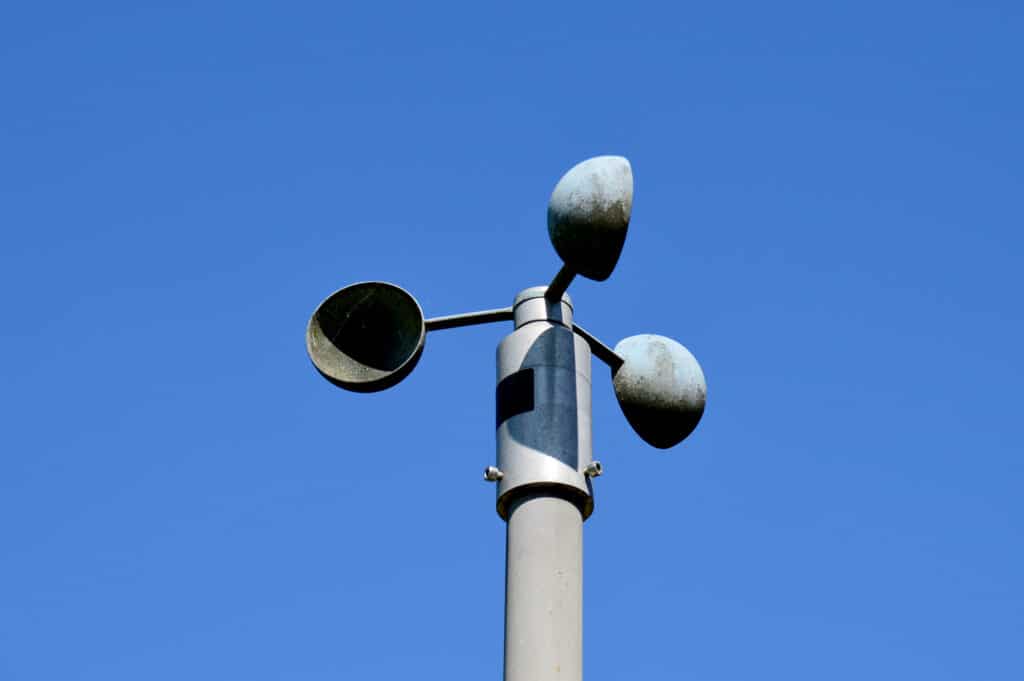Why an Anemometer is Essential for Your Environmental Data Collection
Why an Anemometer is Essential for Your Environmental Data Collection
Blog Article
All You Need to Learn About Anemometers: How They Function, Why They Matter, and Where to Make use of Them
Anemometers, though usually forgotten in the realm of clinical instruments, play a critical function in various fields, offering beneficial insights right into wind rate and air flow patterns. As we dig right into the intricacies of anemometer technology, we will certainly discover the inner operations of these tools, their relevance, and the crucial considerations when picking the right anemometer for particular applications.

Anemometer Fundamentals
A necessary tool used to determine wind speed and instructions, the anemometer plays a vital duty in weather forecasting and different markets. An anemometer typically consists of 3 or four mugs that turn in the wind, a vane that aims right into the wind, and sensors to track the movements or turnings.
There are numerous kinds of anemometers offered, consisting of mug anemometers, vane anemometers, hot-wire anemometers, and sonic anemometers, each with its one-of-a-kind attributes and applications. Cup anemometers are typically used for basic wind speed measurements, while vane anemometers are chosen for directional dimensions.
Concepts of Anemometer Operation
Structure on the fundamental understanding of anemometer basics, the principles of anemometer operation elucidate the auto mechanics behind wind rate and direction measurements. Mug anemometers, for instance, have three or more cups that catch the wind, causing them to spin much faster as the wind speed boosts. Hot-wire anemometers rely on a warmed wire that cools down as wind passes over it, with the price of cooling establishing the wind speed.
Value of Anemometers
Anemometers play a critical duty in gauging wind speed and instructions, offering vital information for weather forecasting, environment research studies, ecological tracking, and air travel operations. Meteorologists rely on anemometers to gather accurate wind data, helping them understand climate patterns, predict tornados, and issue timely cautions to the public. Wind farm drivers make use of anemometers to evaluate wind conditions and make best use of electrical energy production from wind turbines.
Applications Across Numerous Industries
In the renewable power market, anemometers play a critical function in analyzing wind conditions for wind farm positionings, guaranteeing optimum energy production. Industries like construction and mining utilize anemometers to keep track of wind rates, essential for security protocols, particularly when working at heights or in open-pit mines where solid winds can position risks. In agriculture, anemometers aid farmers in taking care of crop spraying by offering real-time data on wind rate to stay clear of drift.

Picking the Right Anemometer for Your Demands
Selecting the suitable anemometer customized to your specific demands is vital for obtaining accurate wind speed and instructions dimensions. When choosing an anemometer, think about aspects such as the intended application, required measurement variety, environmental Learn More Here conditions, and wanted functions. For general objectives, a cup anemometer appropriates for determining wind speed, browse this site while a vane anemometer provides wind direction information. Hot-wire anemometers are ideal for low airspeed dimensions, and ultrasonic anemometers provide high precision and durability.

Verdict
In final thought, anemometers play a critical function in measuring wind rate and direction across different markets. It is vital to consider the importance of anemometers in order to make enlightened decisions when choosing the most ideal tool for determining wind problems.
There are numerous kinds of anemometers readily available, including cup anemometers, vane anemometers, hot-wire anemometers, and sonic anemometers, each with its special attributes and applications. Cup anemometers are commonly made use of for basic wind speed dimensions, while vane anemometers are preferred for directional dimensions. Hot-wire anemometers are appropriate for low airspeeds, and sonic anemometers are ideal for high-precision dimensions in study and commercial settings.Structure on the foundational understanding of anemometer essentials, the concepts of anemometer procedure illuminate the auto mechanics behind wind rate and direction dimensions. For general functions, a cup anemometer is ideal for gauging wind rate, while a vane anemometer supplies wind direction data.
Report this page